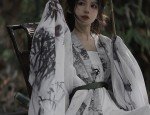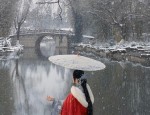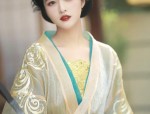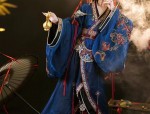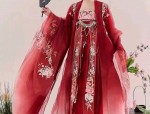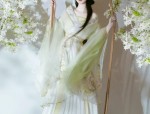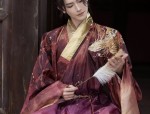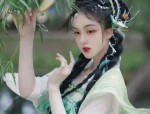The Splendor of Qing and Hanfu Styles:Womens Traditional Chinese Clothing
In the vast tapestry of Chinese history, the clothing worn by women has always reflected the essence of culture and societal norms. Among the numerous styles throughout the ages, the Hanfu and Qing-style clothing are particularly noteworthy for their intricate designs and profound cultural significance.

The Hanfu, originating during the Han dynasty (206 BC – 220 AD), is a traditional clothing style that embodies the essence of Chinese culture and aesthetics. This style of clothing, often characterized by its loose-fitting and elegant designs, was worn by both men and women across different social classes. The intricate patterns and vibrant colors of Hanfu reflect the artistry and craftsmanship of Chinese clothing culture.
During the Qing dynasty (1644-1912), the influence of Manchu culture merged with the Han culture, resulting in a unique blend of styles. Women's clothing during this period underwent significant changes, with the introduction of new materials, patterns, and accessories. The Qing-style clothing, often characterized by its simplicity and elegance, was often adorned with exquisite embroidery and jewelry.
The beauty of these two styles lies in their intricate details and the stories they tell. The patterns and designs often reflect the cultural symbols and traditions, such as symbols of good fortune, prosperity, and harmony. The use of natural materials like silk, cotton, and brocade adds to the elegance and durability of these clothes.
Moreover, these traditional clothing styles are not just about fashion or aesthetics; they are a reflection of deep cultural values and societal norms. The way women wore their clothes, the patterns they chose, and the accessories they adorned themselves with all had a deeper cultural significance. They reflected their social status, marital status, age, and even their personality.
Today, the revival of these traditional styles has become a trend among many Chinese people, especially those who appreciate their cultural heritage. The modern versions of Hanfu and Qing-style clothing are often worn during festivals or special events, as a way to honor their cultural roots. This revival not only showcases the beauty of these traditional styles but also encourages people to appreciate and understand their rich cultural heritage.
In conclusion, the Hanfu and Qing-style clothing are not just pieces of clothing; they are a reflection of Chinese culture and history. They embody the essence of traditional Chinese aesthetics and values, making them a treasured heritage that should be preserved and celebrated. The revival of these styles not only showcases their beauty but also encourages people to appreciate and understand their rich cultural heritage.
Moreover, these traditional clothing styles have the potential to bridge the gap between the past and the present, allowing modern people to connect with their cultural roots. As we move forward in time, it is important to remember our past, celebrate our cultural heritage, and preserve its essence for future generations. The beauty of Qing and Hanfu styles is not just in their intricate designs but in the stories they tell about Chinese culture and history.

 Previous Post
Previous Post

